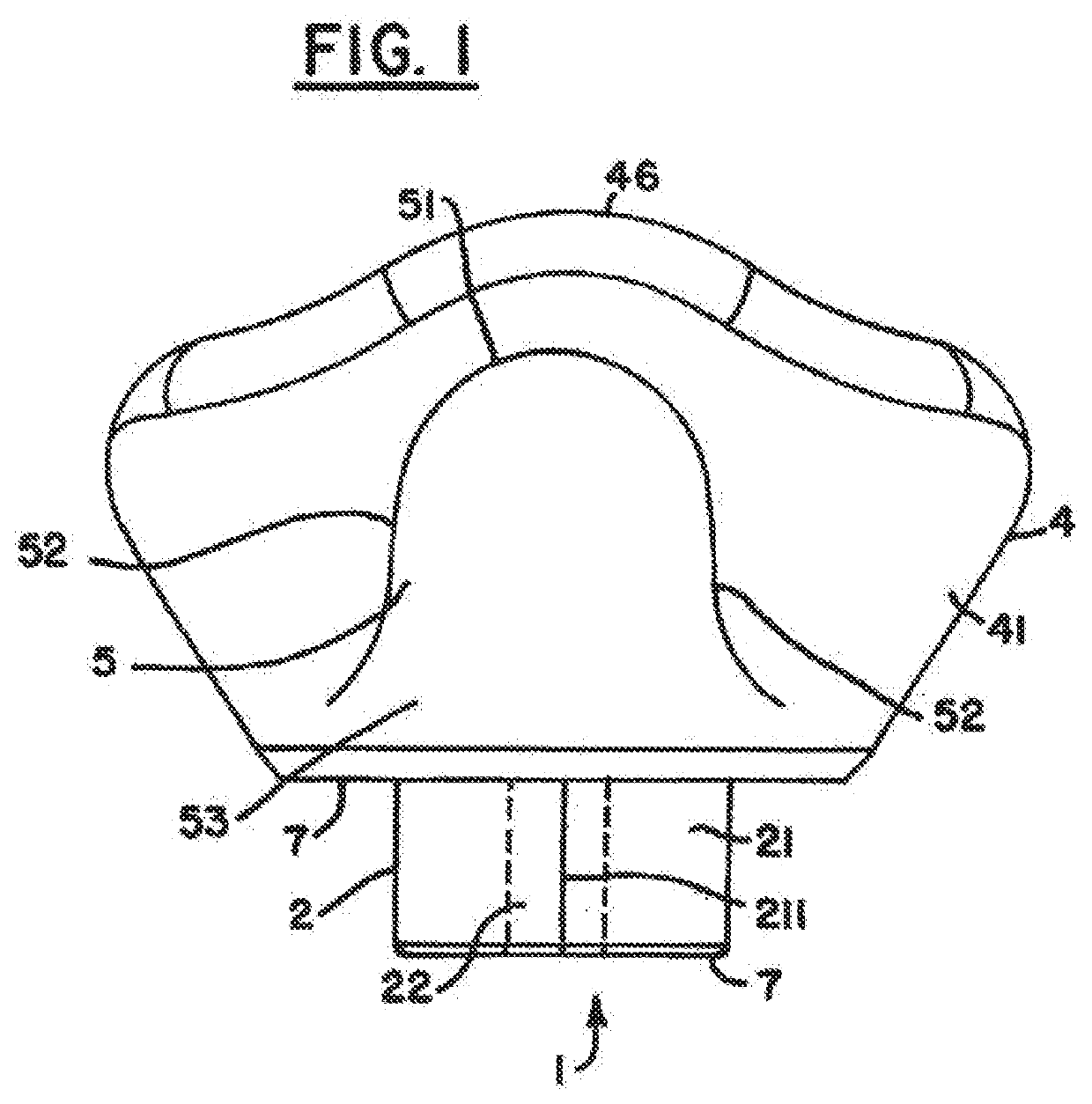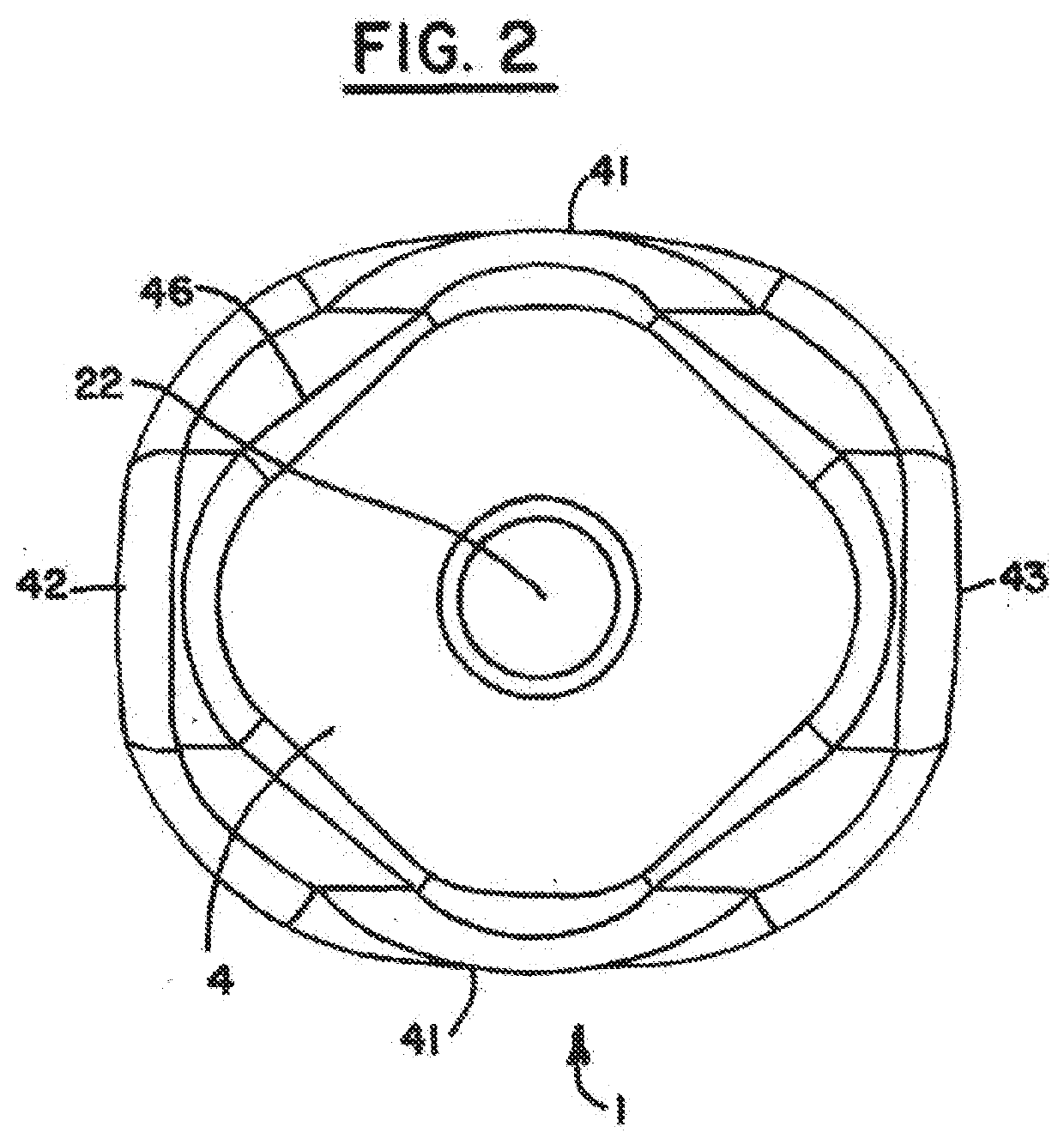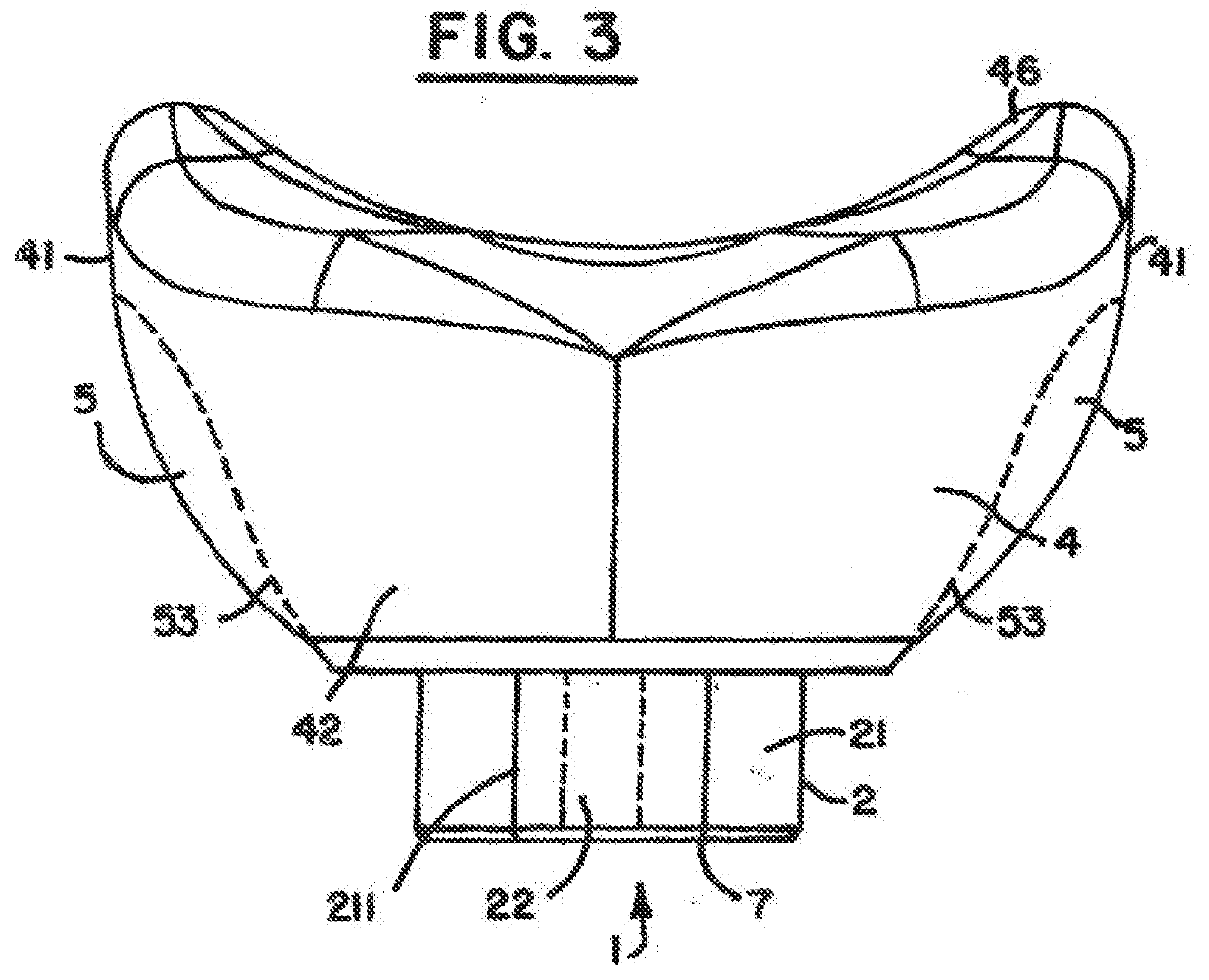Despite the convenience of using a circular healing collar in
single stage surgery, there are both esthetic and mechanical drawbacks.
A major
disadvantage to the use of conventional, circular healing collars is that maturation of the
gingival tissue around a conventional circular cross-sectional (in the horizontal plane) healing collar, heals in a non-anatomic shape.
This situation can make the placement of the final crown more difficult.
As the
gingival tissue matures in a non-anatomic shape it is less resilient to the outward pressure of the final crown's (prosthetic tooth) greater overall dimension and different shape, which can cause a mismatch between gingiva and crown.
This can hinder the complete seating (cementation or
screw fixation) of the final crown.
This situation can cause the crown to be incompletely connected onto the abutment, therefore requiring reduction of the crown's
occlusal surface or resulting in open regions between the abutment and crown interface.
Open regions between the abutment and crown can cause
cement extrusion into the
surgical site resulting in an inflammatory tissue response, compromised healing and alveolar bone loss.
Both stability and aesthetics can be compromised.
This can be exacerbated by inaccurate placement of the crown abutment with respect to the connection axis of the implant.
With lack of
gingival tissue to help retain the bone graft, the graft can become unstable.
A conventional circular healing abutment does not allow for
complete occlusion of the gingival opening and stabilization of the bone graft.
This also adds to the difficulty of fitting a crown abutment to the implant site.
However, their lack of rigidity can also lead to bone graft
instability.
This lack of bone graft stability can lead to loss of the bone graft and non-ideal alveolar bone
anatomy.
Non-ideal alveolar bone
anatomy around a dental implant will ultimately lead to displeasing aesthetic results.
Such systems have only occasionally been successful in
contouring gingiva, and providing acceptable final aesthetic results.
Custom made temporary prostheses have also been used but are labor intensive, take multiple appointments, and do not contour, contain, and stabilize
bone graft materials.
This approach can be very
time consuming, expensive for the patient, and only addresses the gingival tissue.
If the distance between the landmarks is greater than the recommended guidelines then the probability for incomplete presence of the interdental papilla increases and esthetics becomes less favorable.
However, conventional techniques have proven unreliable in controlling the desired
contouring of gingiva.
Unfortunately, there still remain flaws in conventional implant
dentition with regard to matching a crown, or other prosthetic abutment, to the complexities of the optimized gingiva configuration resulting from the subject healing abutment.
Once again, this is a time-consuming process, and can be irritating to the patient.
The aforesaid process can often prove to be tedious to both the practitioner and the patient.
The use of the scan post, along with two scans (rather than one), is time-consuming and expensive.
Another complication is that the scanning systems provided by different commercial entities use different types of scanning bodies or posts.
The use of these different devices complicates the process for the practitioner, who must adapt to different sizes, shapes and configurations of scanning bodies and posts.
This adds to the time spent by the practitioner and the inconvenience suffered by the patient.
This means that there are two major issues to consider: the precise fitting of the abutment and the crown thereon; and, the overall aesthetic appeal of the combined crown and abutment.
A crown configuration (and the correct prosthetic abutment orientation) for optimum aesthetics can be very time-consuming.
Rather, it is the time spent scanning the patient's mouth, both with and without the healing abutment, and the use of the scanning post, that places a strain on both practitioner and patient.
This data gathering aspect of the overall process presents the problems in crown configuration and alignment.
This cannot be properly achieved with the current techniques for measuring crown abutments, and designing crowns.
 Login to View More
Login to View More  Login to View More
Login to View More 


